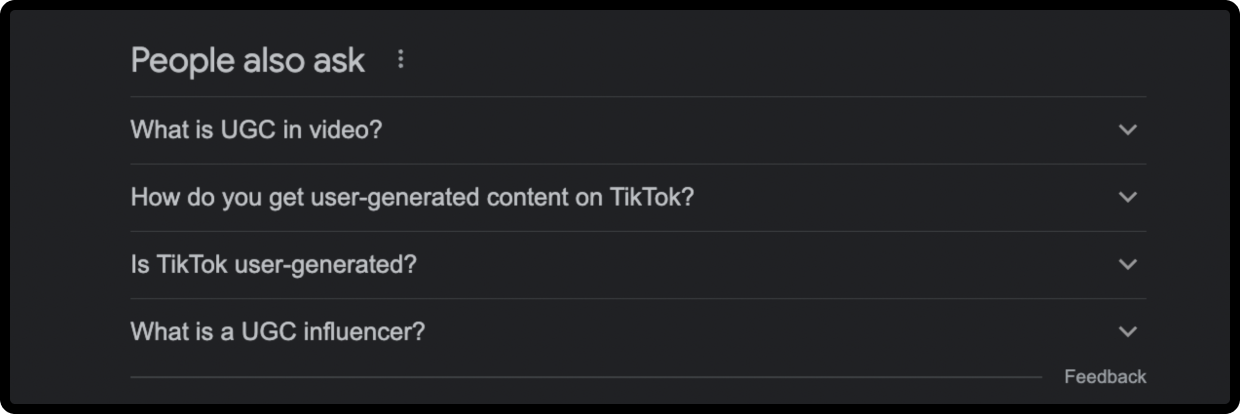To be the top-ranking Google article, you need to understand how Google Search works. Google search, just like every product, is targeting an optimal experience for its users — those who use it to search the web.
The optimal search experience, in Google’s case, is when a user searches for something and ends up finding the answer that fulfills the intent behind the search — thus increasing the user’s trust in Google and encouraging them to come back for future answers instead of going to Bing or Tiktok!
Google’s SEO Algorithm Simplified
The single job of Google’s search algorithm is to match each incoming search query with the perfect search result that fulfills the user’s search intent. Yes, that’s what the world’s most sophisticated algorithm is solving for.
So what is the perfect answer for Google? Again, it’s the answer that the user believes is best, aka meets user search intent. Now we need to solve what’s that perfect answer that fulfills users’ search intent.
Is Google’s algorithm good at finding the best answer that users expect most of the time? I would say yes, it’s pretty good. So, it’s safe to assume that every time you search Google for something, the top results reflect what Google thinks is the perfect answer for this query = what meets users search intent.
Reverse The Search Process to Gain Insight & Intent on Your Targeted Keyword:
Now that we know that the game is all about meeting search intent and providing an optimal user experience, let’s reverse engineer the process.
To start, perform a search for the keyword you’re attempting to rank for — the top 3 results are the competition you need to analyze and eventually outperform.
Look for the attributes that make their article the perfect answer that meets both Google and Users’ expectations. It’s often the following:
- Direct relevance to the search query/topic: You can’t rank for the query “red shoes”, if you only list “shoes”. The post with “red shoes” would win.
- Thoroughness: The post covers all angles and aspects of the subject — often 1500+ words.
- A trusted source on the topic: The author has written on the topic/industry extensively, and they have backlinks reflecting authority.
- Unique quality: The post incorporates engaging content with rich media that illustrates and elevates the content (not re-circulating the same content that exists already in the competing pieces). This one is super important.
- Easy to read and crawl: The post is formatted with simple text + rich media (image, gif or video) with clear titles and subheads reflecting what’s covered under them to make it easy to skim and crawl for both users and search algorithms.
Use Your Research To Structure Your Page Hierarchy
Now that we are aware of these key attributes, our job is to outperform the existing top search results for the search query you are after by beating them across the 5 attributes above.
Research and know the way you are going to tackle an article well before starting to write. All it takes is to search for the keyword or the topic you are interested in writing about. Writing without a plan and clear picture of what the perfect expected answer is, is a waste of writing energy.
- Title (your H1 tag) is half of the battle for users to know if this article meets expectations and decide to click on it or not. Include your keywords and the variations reflecting the various angles/what to expect from the article.
- Headlines and subheads (your H2/H3) that break the article into distinct parts reflect the angles and questions covered and makes it easy to digest for both detailed slow readers and the quick skimmer that wants to jump to a particular point.
- Related Questions found in the SERP can be a good clue to not only questions the user might be curious about, they likely include secondary keywords. Answering these in your post could assist in rankings and traffic.
- Images with clear alt tags and file names reflect/describe what’s in the image.
How to Come up with The Perfect SEO Title?
The ideal title does the following:
- It captures precisely what the article is about using the primary keyword you are trying to rank for.
- It’s interesting and entices users to click — winning the competition on Google’s search result page.
- It captures secondary variations that users associate with this subject (You can check the related terms and competition for these secondary keyword variations)
Here is an example:
Community-Led Growth Strategies: Expert’s Guide for Startups in 2022
The primary keyword is: “community-led growth”
The secondary variations are:
- “Community-led growth strategy”
- “Community-led growth guide”
- “Community-led growth 2022”
These secondary variations are not added to stuff the title with keywords randomly. They are descriptive of what’s in the article and make the title enticing to click while also being keyword variations that users often include while searching for the subject.
In terms of thoroughness, cover all angles of the topic and be holistic. Outperform the top 3 articles that are already ranking for the topic. You can bring various inspo from them and outdo them in thoroughness, clarity, and quality.
If you want to know what angles users are interested in in a given topic, search for the topic, and look at the related terms. These are the most searched variations or related searches when it comes to searching that topic.

Now you know what to do! Incorporate these variations into your article and include the related search term in your title or various headers to tell Google, “My article is relevant!”

You will also find a bunch of toggled questions under the “People Also Ask” box.
Incorporate these questions, and of course their answers, in your article at the bottom in an FAQ section. Now you have a perfect article that, with the domain expertise we have with Google, will likely rank!
Simplified SEO Checklist:
- Search the topics you are after on google and analyze the top 3 results for inspiration on what to cover.
- Identify the targeted primary keyword by search volume for the keyword (ahref, semrush), the angle you plan on going deep on, and competition.)
- Assess how to outperform the 3 top performing articles in terms of relevance, thoroughness, and providing a unique, useful perspective on the matter.
- Identify secondary keywords variations and angles to cover on the topic from the “people also ask” and “related search terms” sections on google search.
- Build title with primary keyword and try to include as many secondary variations as possible while staying descriptive and interesting to click for social.
- Break down the article into various sections with a section head as H2 or H3 that describes what’s under them.
- For high search volume and high competition terms, (typically major industry terms) use Ahref or SEMrush to research keywords to find positioning that is high search volume and low difficulty to rank.







